China’s GAC Debuts Ammonia-Powered Car Engine

With the automotive industry now keen on propulsion systems that don’t emit a lot of carbon, we’ve seen decades of manufacturers toying with alternative fuels. Corn-based ethanol was big for a while and the Germans have recently shown a renewed interest in carbon monoxide and hydrogen-based synthetic fuel stemming from the gasification of coal, biomass, and/or methane.
Meanwhile, China’s state-owned Guangzhou Automobile Group Company (GAC) has announced it had developed an engine powered by ammonia with help from Toyota Motor Corporation during its annual technology showcase.
While Bloomberg reported it as the “world’s first car engine that runs on ammonia,” other companies have been developing engines that run on the inorganic compound for years. MAN Energy Solutions has been working on a two-stroke motor it expects to be commercially available for maritime applications by 2024.
Amogy, a startup founded by four MIT graduates, even revealed an ammonia-electric semi truck at the start of 2023 and had previously modified a John Deere tractor to run on the fuel. Going back in time a bit, we can see that the Caterpillar Corporation filed a 2008 patent application that covers a “power system having an ammonia-fueled engine.”
What’s different about the GAC-Toyota joint is that the duo has allegedly overcome some of the issues associated with burning it. Ammonia is pretty toxic and was often faulted as having the potential to emit even more greenhouse gasses than conventional fuels. Production methods are relatively energy intensive. But companies are trying to swap to “green” variants that utilize renewable energy — though these only represent a fraction of the whole at present.
“We’ve overcome the pain point of ammonia being difficult to burn quickly and put the fuel to use in the passenger car industry,” Qi Hongzhong from GAC’s research and development center told reporters. “Its value to society and for commercial uses are worth anticipating.”
From Bloomberg:
Ammonia is being explored as a carbon-free fuel but it faces hurdles because of its low flammability and high nitrogen oxide emissions. GAC said it has developed a 2.0-liter engine that can burn liquid ammonia more efficiently in a safe manner, achieving 120 kilowatts of power and a 90 [percent] reduction in carbon emissions compared to conventional fuels, according to Qi.
State-owned GAC is leading Chinese legacy automakers in the transition to green energy. Its EV brand Aion became the third best selling clean-car brand in the country, behind BYD Co. and Tesla Inc., after overtaking General Motors Co.’s joint venture with SAIC Motor Corp. and Wuling Motors Holdings. The Guangzhou-based company has been investing in research and development, and incubated the battery making unicorn Greater Bay Technology, which is working on EV cells that can charge in 15 minutes and in all weather conditions.
Technological advancements aside, not everyone seems convinced that ammonia is going to be the new hotness. The industry would need to embrace the concept fairly broadly and be willing to spend more money to chase development. That’s a tall order when so much money is already tied up in battery-electric vehicles.
We’ve seen hydrogen power fizzle out somewhat in recent years for similar reasons. Despite impressive leaps in technology over the last two decades, interest is limited to Japan and a smattering of other regions that already have enough hydrogen fueling stations to rationalize using it as a way to power automobiles. It’s relatively energy intensive to produce and brutally difficult to store. Ammonia would likewise need to see specialized fueling stations crop up all around the planet before it becomes viable and there are lingering questions on just how ready GAC’s motor actually is for mass production.
“Ammonia is hellish to handle,” said Colin McKerracher, head of transport and automotive analysis at BloombergNEF. “I can’t see it taking off in passenger cars.”
[Image: GAC Motor]
Become a TTAC insider. Get the latest news, features, TTAC takes, and everything else that gets to the truth about cars first by subscribing to our newsletter.

A staunch consumer advocate tracking industry trends and regulation. Before joining TTAC, Matt spent a decade working for marketing and research firms based in NYC. Clients included several of the world’s largest automakers, global tire brands, and aftermarket part suppliers. Dissatisfied with the corporate world and resentful of having to wear suits everyday, he pivoted to writing about cars. Since then, that man has become an ardent supporter of the right-to-repair movement, been interviewed on the auto industry by national radio broadcasts, driven more rental cars than anyone ever should, participated in amateur rallying events, and received the requisite minimum training as sanctioned by the SCCA. Handy with a wrench, Matt grew up surrounded by Detroit auto workers and managed to get a pizza delivery job before he was legally eligible. He later found himself driving box trucks through Manhattan, guaranteeing future sympathy for actual truckers. He continues to conduct research pertaining to the automotive sector as an independent contractor and has since moved back to his native Michigan, closer to where the cars are born. A contrarian, Matt claims to prefer understeer — stating that front and all-wheel drive vehicles cater best to his driving style.
More by Matt Posky
Latest Car Reviews
Read moreLatest Product Reviews
Read moreRecent Comments
- Lou_BC On a different note, I read that 30% of the world's energy is now generated by "renewable" sources.
- Kjhkjlhkjhkljh kljhjkhjklhkjh not surprised their grid is as terrible as ours ...
- Lou_BC EV's are a convenient foil. Cadillac has been searching for its place. Are are they luxury performance? In your face audacious? Do they offer prestige? What sets them apart from the rest of "the look at me I'm special" vehicle market? I can buy a Denali SUV or pickup with similar luxury.
- Cprescott No big loss. It was always third rate when there was competition. At best its only good point was its price point.
- ToolGuy Journalists saving the world again. LOL.























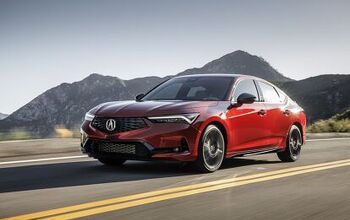

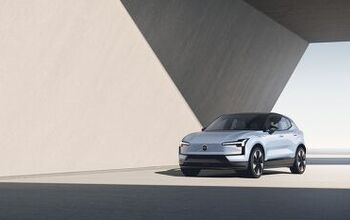

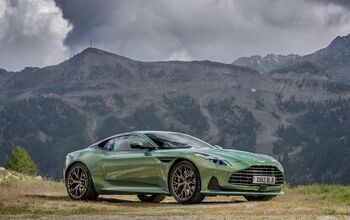


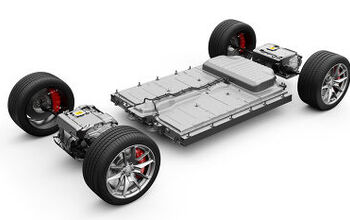

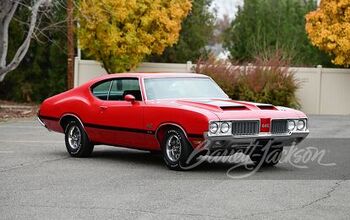

Comments
Join the conversation
Considering ammonia is 3 parts hydrogen to 1 part nitrogen, I can see the appeal to trying to use it as a fuel. Interesting, its primary use is as a cleaning solvent, just as naphtha was before it became gasoline. The drawback seems to be both its strong, acrid, aroma and the fact that it's a stable molecule, making it difficult to ignite compared to carbon-based fuels. If they've solved the ignition issue, which is what's claimed above, then the aroma ends up being the primary issue, as the stench is enough, when concentrated, to burn the sinuses and exacerbate breathing issues.
Ammonia. The locals growing ethanol in their fields use it in anhydrous form. Mom used it to clean things. I used it in nuclear reactor chemistry to maintain pH for corrosion control. Used as a commercial refrigerant. Interesting chemical (concentrated, it really stinks; one of my least favorite things to shoot into the primary coolant). In concentrated liquid form it can be dangerous to handle - concentrated ammonia can burn you badly similar to caustic soda. Current uses of ammonia for combustion require another fuel mixed with it to initiate the combustion process, gasoline or diesel - it ain't a truly green fuel that likely adds complication to the process. Maybe GAC is fishing for investor money...